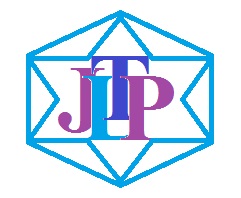Focus and Scope
Journal of Learning and Technology in Physics is an integrated forum for communicating scientific advances in the field of physics technology and physics education. The journal reports significant new findings related to physics applications and physics education, including:
- Learning Models
- Media Learning Development
- Learning Methods
- Experimental Research
- Qualitative Research
- Quantitative Research
- Learning Materials Development
- Learning Evaluation
- Literature Study
- Material Sciences
- Technology in Physics
Journal of Learning and Technology in Physics aims to promote innovation in physics for reach technology development in Physics case.
Section Policies
Articles
Vol 1 No 1
Vol 1 No 2
Vol 2 No 2
Vol 2 No 1
Vol 4 No 1
Vol 4 No 2
Vol 3 No 1
Vol 3 No 2
Vol 5 No 1
Peer Review Process
- Author submits manuscript to journal through our online journal system (OJS).
- All manuscripts submitted to this journal must follow focus and scope, and author guidelines of this journal. The submitted manuscripts must address scientific merit or novelty appropriate to the focus and scope. All manuscripts must be free from plagiarism contents. All authors are suggested to use plagiarism detection software to do the similarity checking. Editors will check the each manuscripts' similarity rate using the Turnitin software.
- The Editor-in-Chief (EIC) will check the feasibility of the topic for possible publication. Suitable manuscripts are submitted to the editors for further processing. Manuscripts not suitable for publication will be rejected.
- The EIC will check the completeness of provisionally accepted manuscripts based on the guidelines for authors, adherence to the journal’s templates, adequacy of references, originality (check on potential plagiarism issues), and accuracy of language.
- Manuscripts that meet the journal format and requirements will be forwarded to a minimum of two reviewers/ advisory editors under a double-blind process. Manuscripts that did not meet the requirements will be sent back to the author/s for revision. The reviewers give scientific valuable comments improving the contents of the manuscript. Based on the results of the peer review, editor decides whether a manuscript may be published without revisions, or be sent back to authors to perform minor revisions or major revisions; a manuscript may also be rejected. For a minor revision, the authors are requested to submit a final version of the manuscript with the required changes. For a major revision, a final version of the manuscript will be resubmitted to the peer reviewers for re-evaluation. In this case, the peer review process begins anew.
Open Access Policy
This journal provides immediate open access to its content on the principle that making research freely available to the public supports a greater global exchange of knowledge.
Archiving
This journal utilizes the LOCKSS system to create a distributed archiving system among participating libraries and permits those libraries to create permanent archives of the journal for purposes of preservation and restoration. More...
 Journal of Learning and Technology in Physics
Journal of Learning and Technology in Physics
